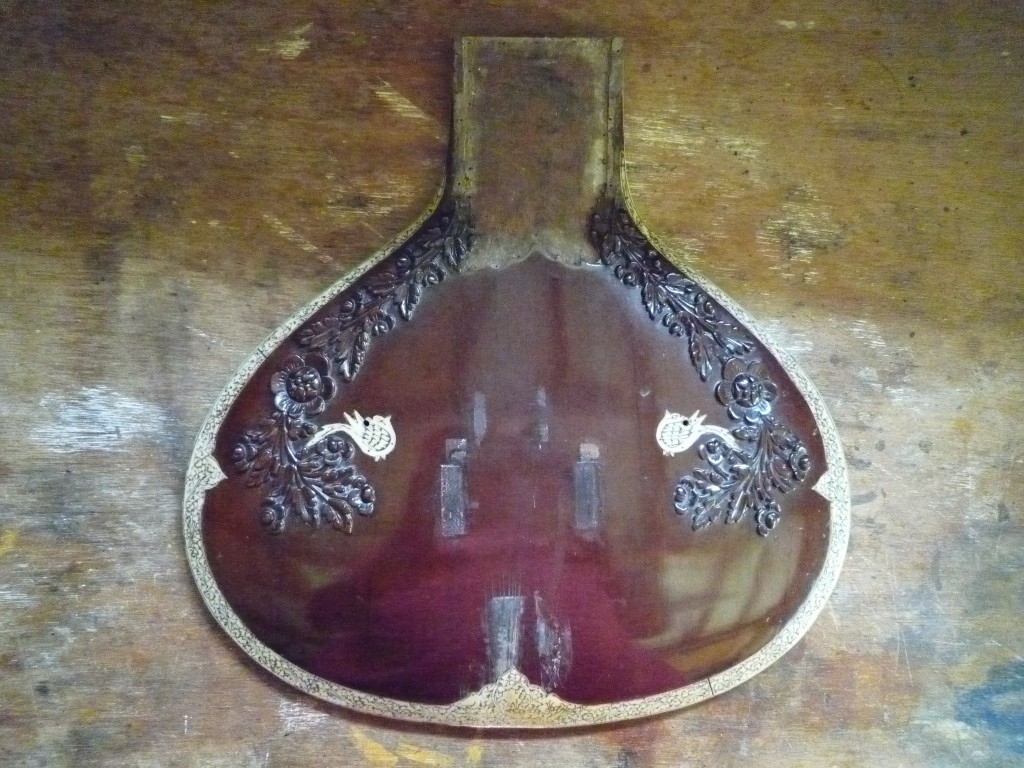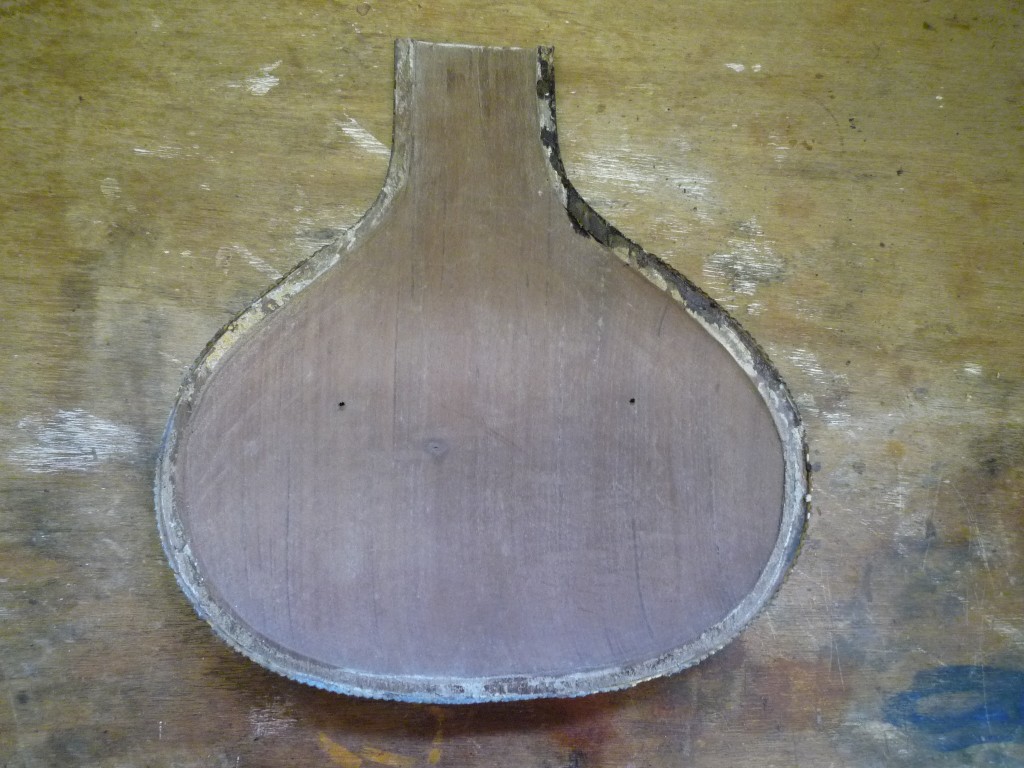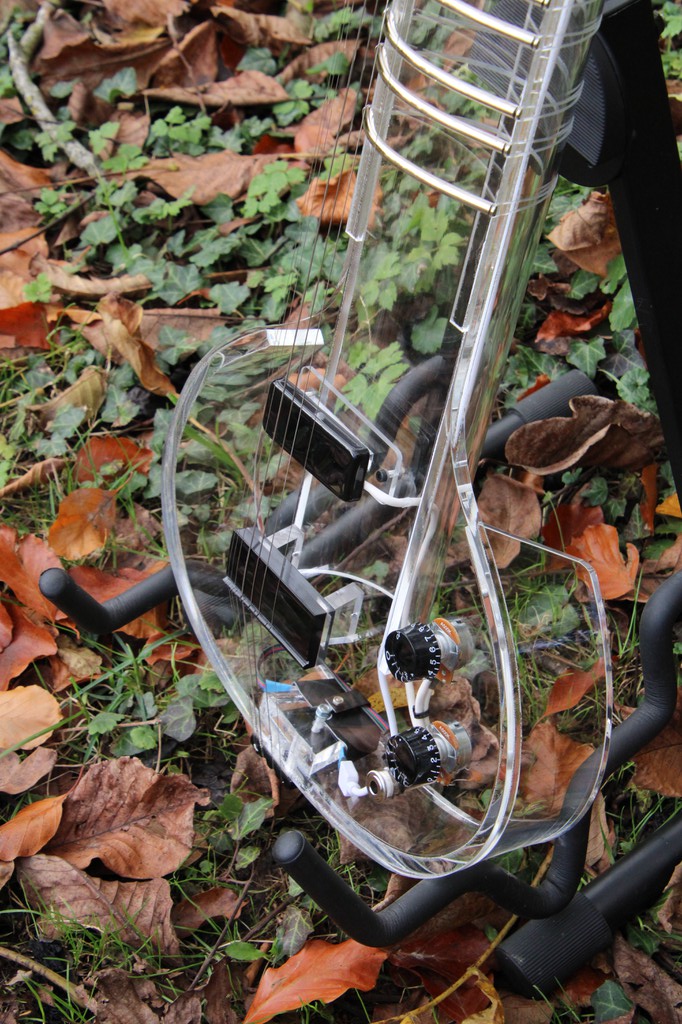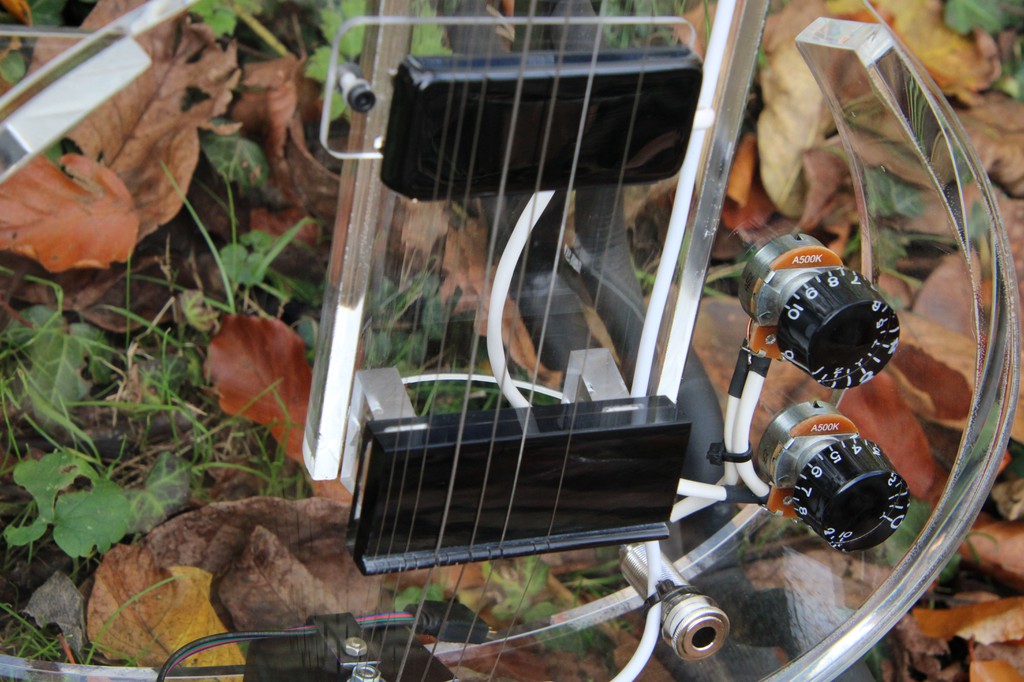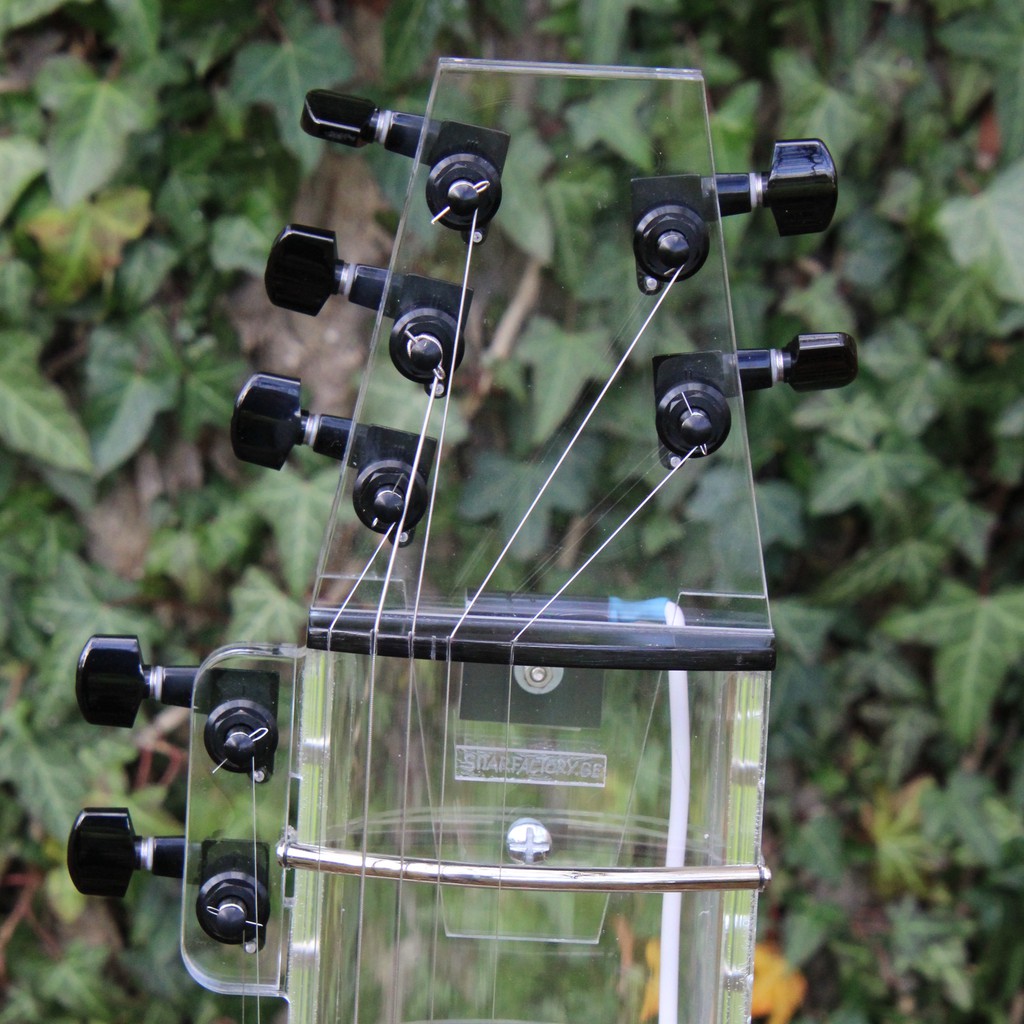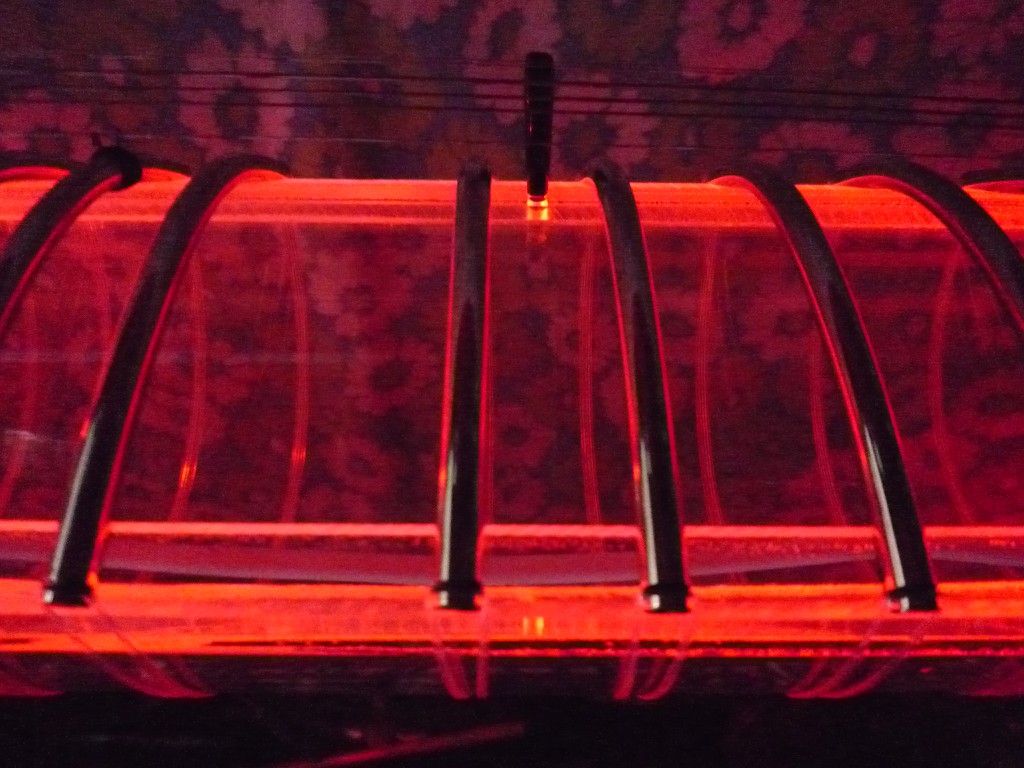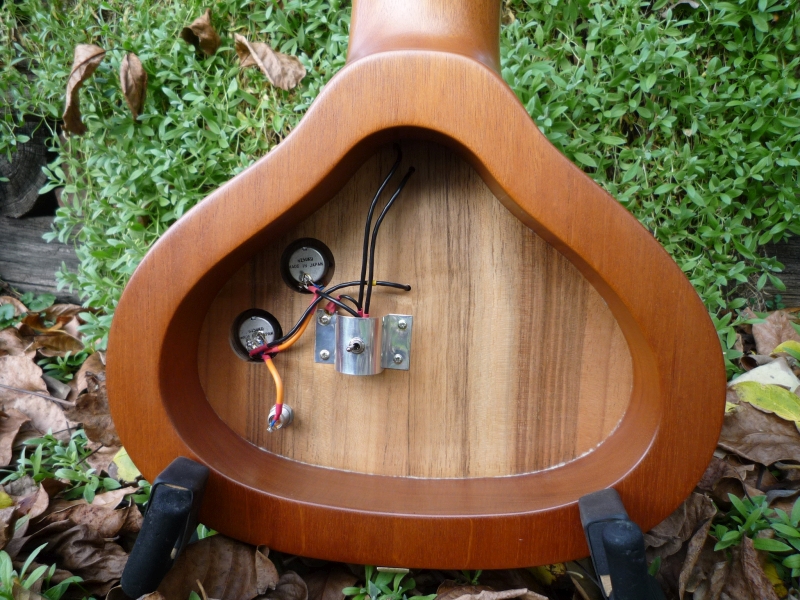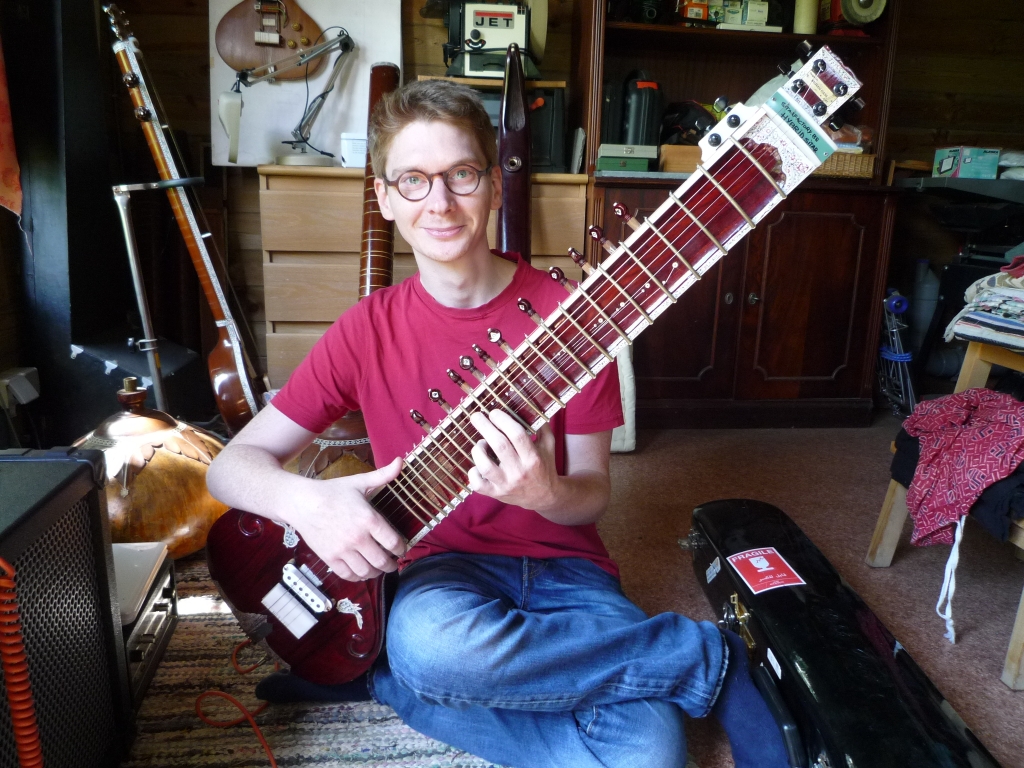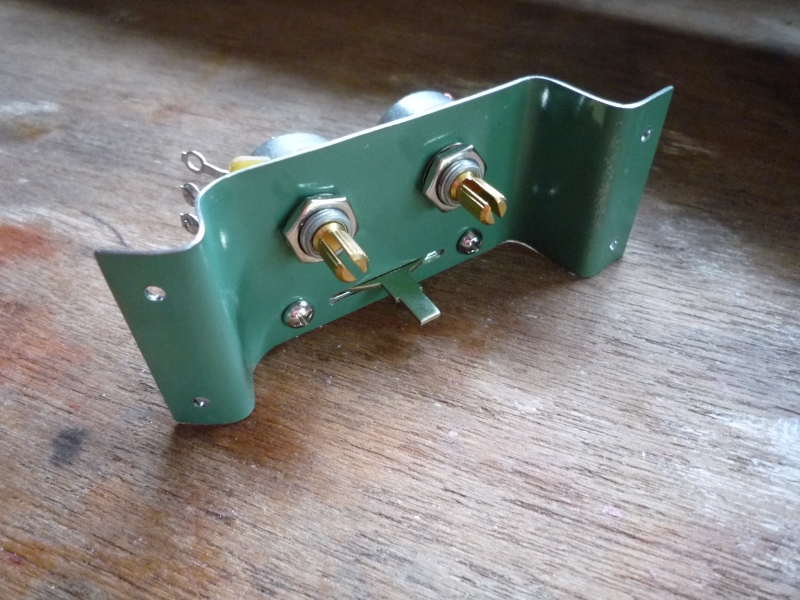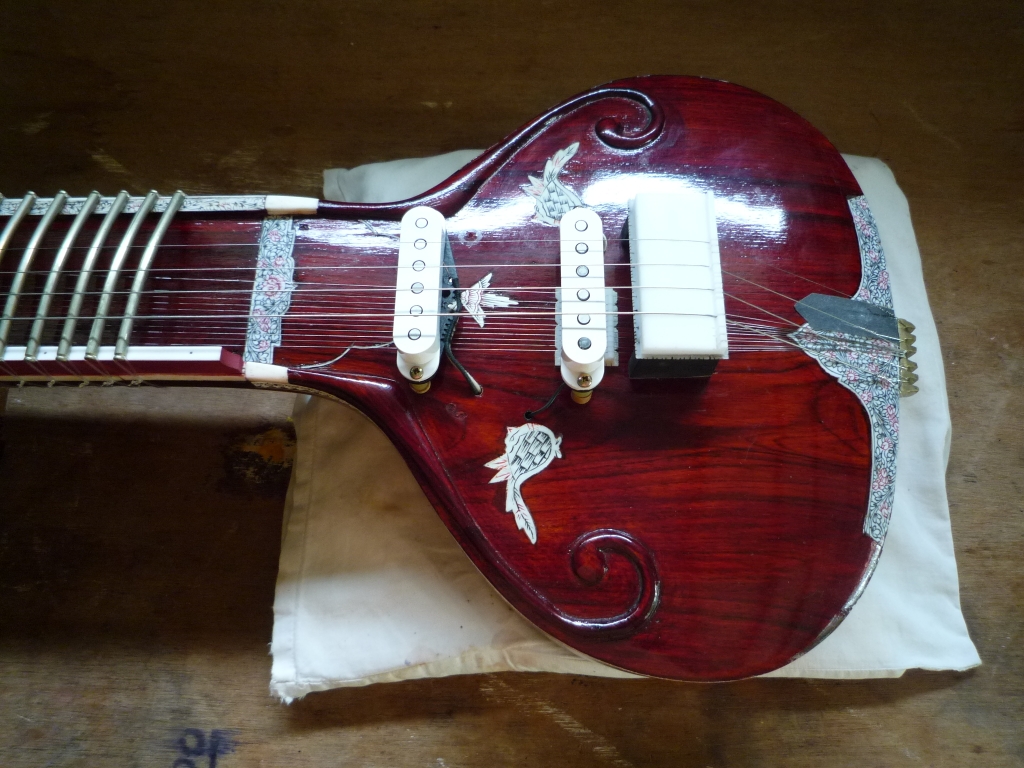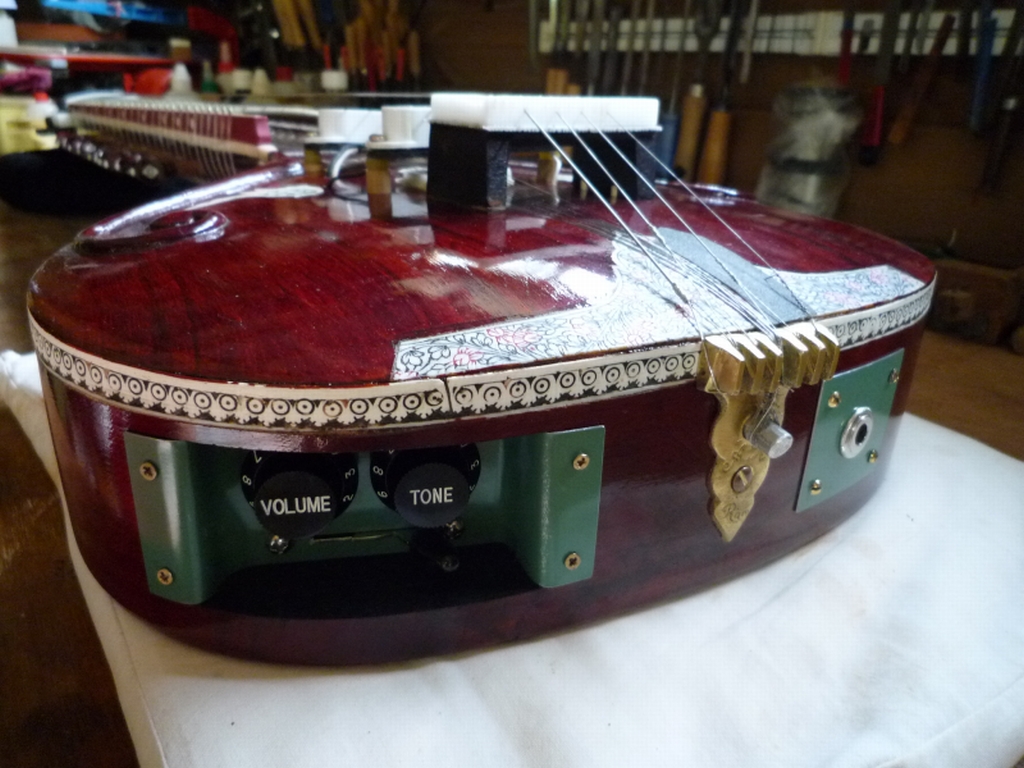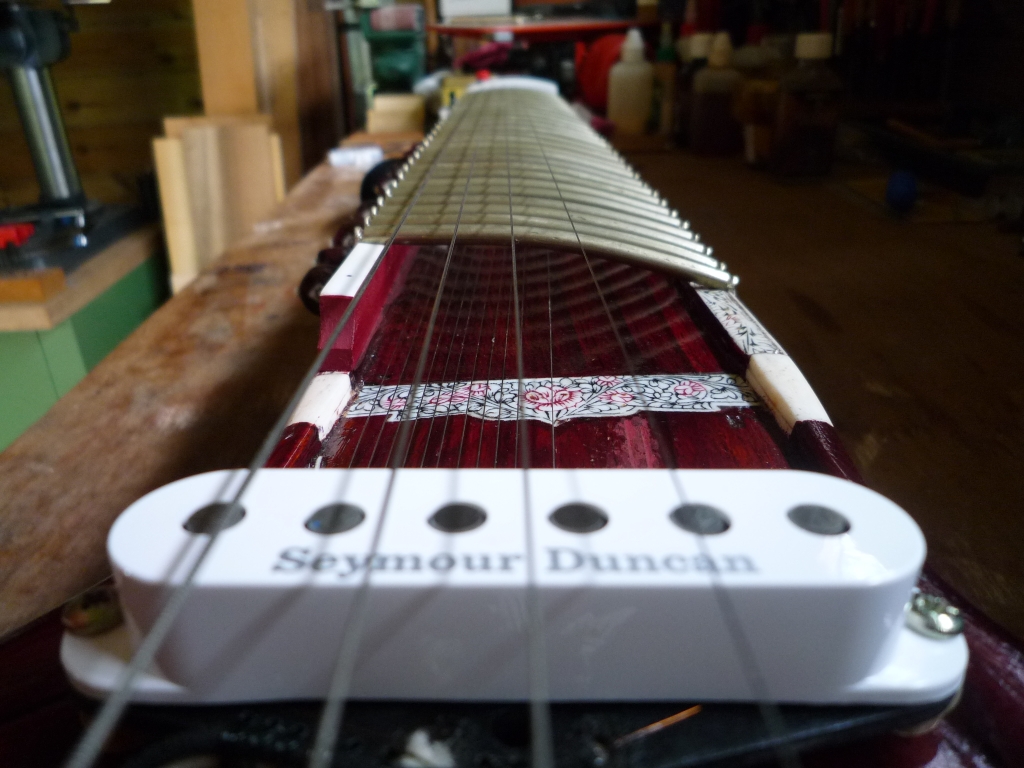Intonation on the sitar (& surbahar) is a very complex aspect for players to master due to its unique structure and intricate tuning system. Unlike Western stringed instruments with standardized frets, the sitar’s pardas (frets) are movable, allowing players to adjust the intervals between notes to suit different ragas or tonal structures. This flexibility, while beneficial for musical expression, also creates a challenge in maintaining acceptable intonation. Even slight misplacement of a parda can alter the pitch and compromise the player’s comfort and impact the performance.
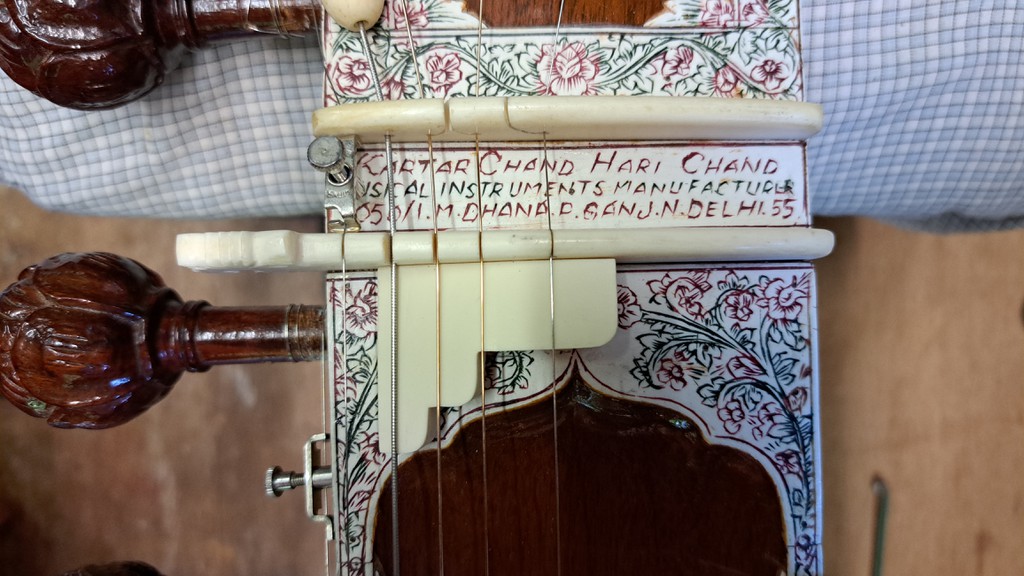
Achieving nearly perfect intonation on a sitar & surbahar requires a lot of attention to detail, advanced tuning skills and adjustments. In consultation with Jan van Beek, I designed intonation blocks for his sitar & surbahar. They are made of Elforyn™ and fully tuned to his instruments.
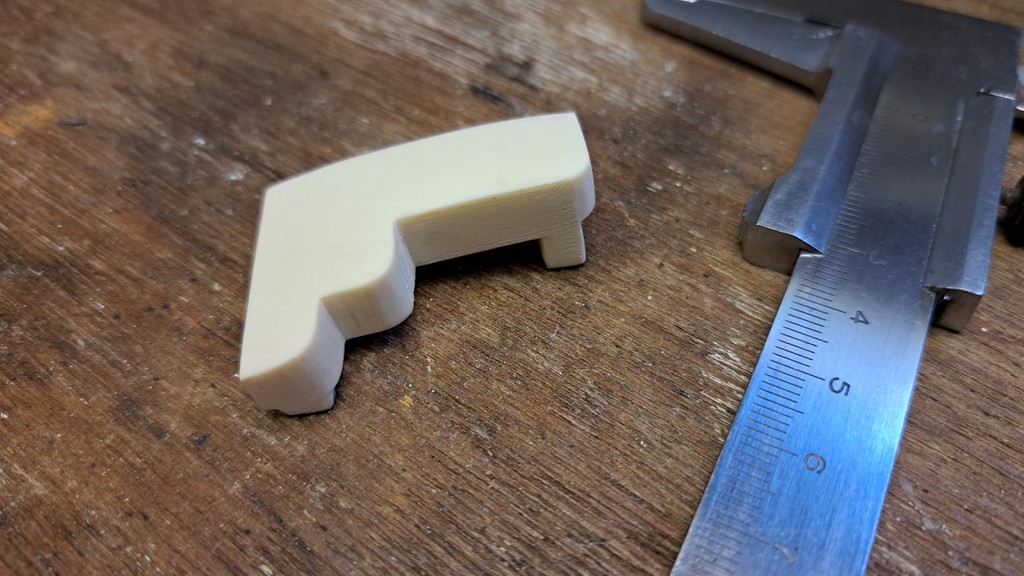
Elforyn™ is a modern synthetic ivory substitute that is very hard-wearing and at the same time easy to work with. Moreover, it has a very natural appearance.
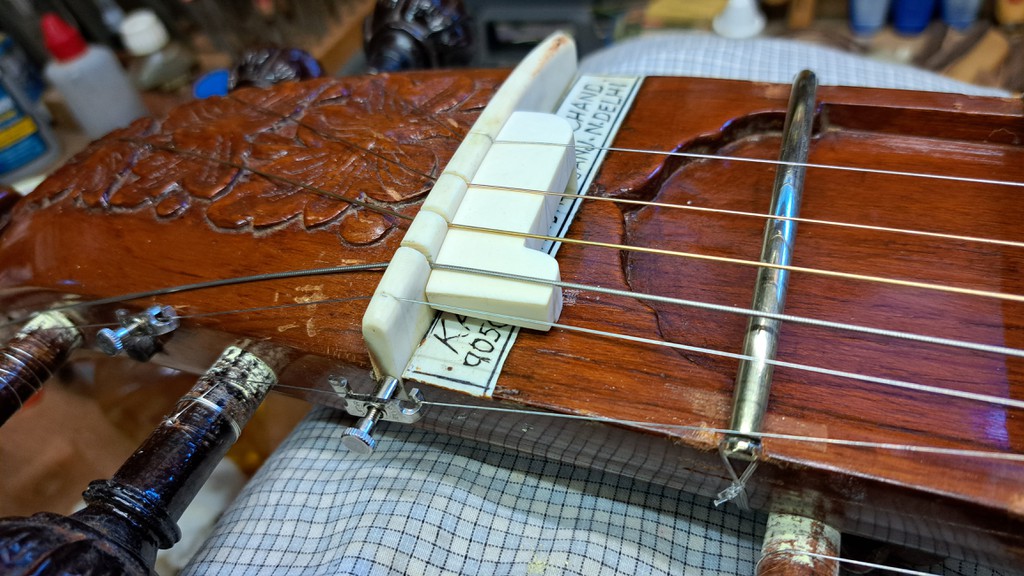
Besides greatly improved intonation, these special blocks have an additional advantage. The distance from the first parda to the meru (comb or nut) increases, making the string longer there. In this way, it becomes possible to play more comfortable and thus more accurate meend on the highest pardas, and especially on the first.

Another case of intonation can be read here.
Tag Archives: SitarMaking
Tabli info
Dear friends, please hereby find some info about different styles of tabli. Clicking on the pictures will show up a drawing presenting the thickness (in mm) on different locations of the tabli and a zoom showing details of the surface finishing on the backside. Notice the increased thickness at the jawaris section to prevent indent on the surface.
1. Kartar Chand RS style 1980’s Tun wood
2. Naskar RS style Teak wood
3. Hari Chand RS style 2005 Tun wood RAW tabli
4. Rikhi Ram VK style 1970’s Tun wood
5. Unknown 1980 RS style Tun wood
6. Ud. Ilyas Khan’s Hiren Roy RS style 1960’s Tun wood
7. SAS-02 New style 2008 Walnut wood
My Last See-Tar
A random photoreport on the making of my latest and last plexiglass See-Tar.
2 more Plexitar sitars
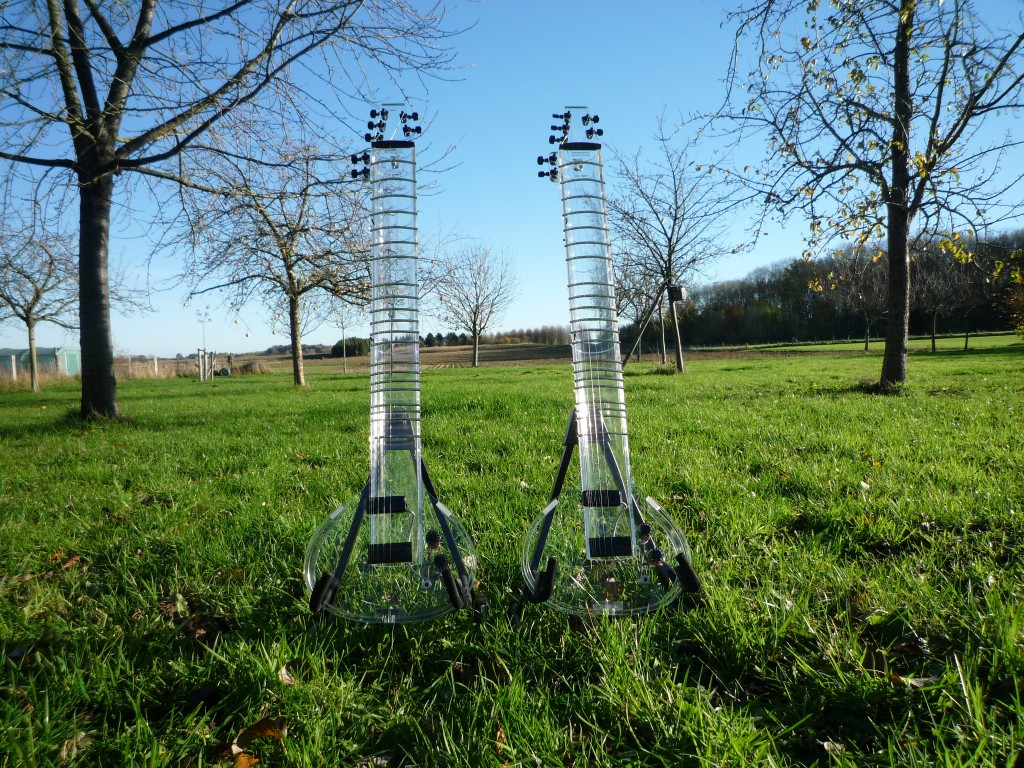 This year I’ve completed 2 plexiglass sitars. They are 100% See-Tar cloned replicas according to the original Purbayan Chatterjee copy as seen here on this site.
This year I’ve completed 2 plexiglass sitars. They are 100% See-Tar cloned replicas according to the original Purbayan Chatterjee copy as seen here on this site.

Sound sample:
Plexitar on AER Compact 60 amp
Comes with a solid AUER CP 12416 Protective case Pro with locks & wheels in beautiful “blutorange” (vermilion) color.
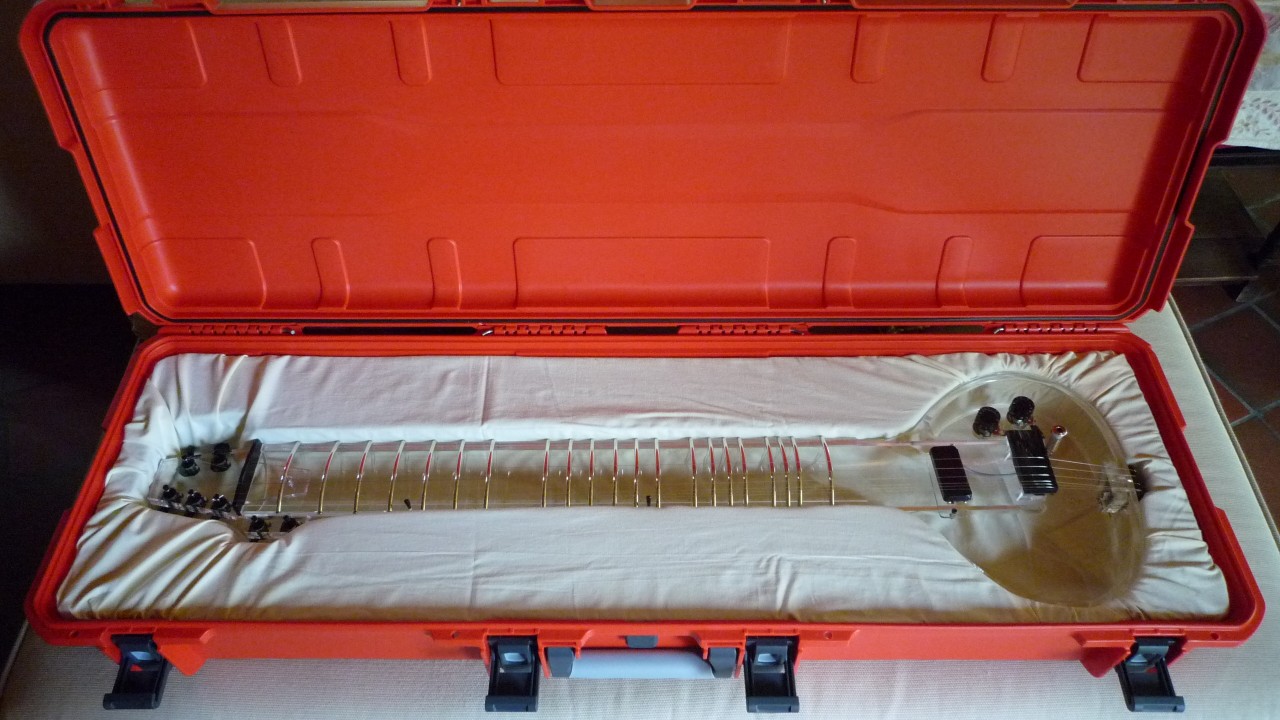
SBS-02, with 3 Lipstick pickups
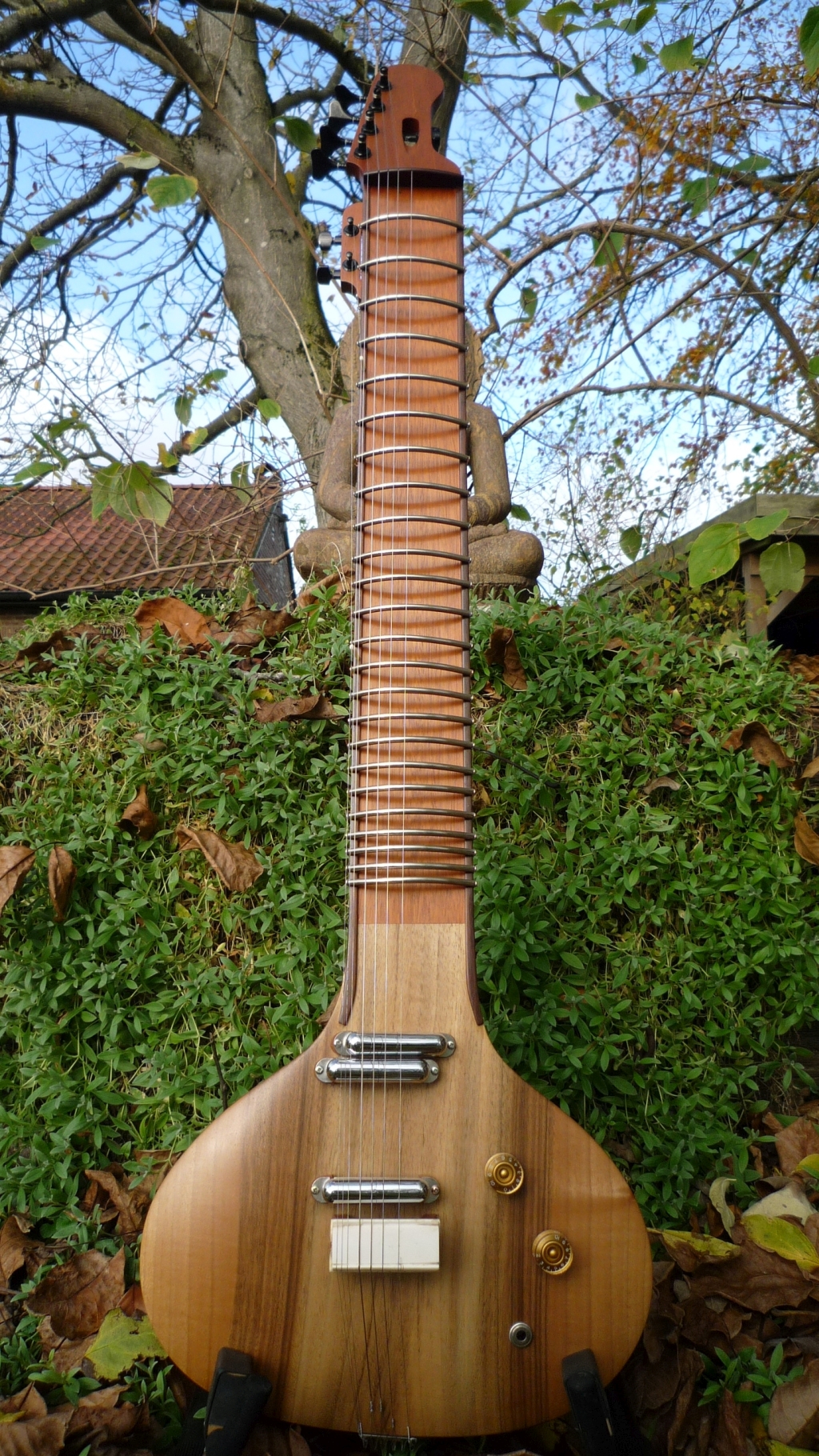 I have improved the sound of my solid body sitar SBS-O2. I added one Lipstick ‘bridge’- pickup to the combination. The earlier 2 ‘neck’-pickups can be switched in parallel or in series and now smoothly be mixed with the additional ‘bridge’ pickup by means of one of the pot-meters. All the pickups are Seymour Duncan types and the sound possibilities are divers and very inspiring.
I have improved the sound of my solid body sitar SBS-O2. I added one Lipstick ‘bridge’- pickup to the combination. The earlier 2 ‘neck’-pickups can be switched in parallel or in series and now smoothly be mixed with the additional ‘bridge’ pickup by means of one of the pot-meters. All the pickups are Seymour Duncan types and the sound possibilities are divers and very inspiring.
Sound sample:
SBS-02 & SH101
You hear SBS-02 thru an Orange CRUSH20 distorted amp accompanied by a Roland SH101 synth in a random modulation (complex tanpura) mode …
Note: May not be entirely suitable for pure ICM… 😉
Tabli Info
Dear friends, please hereby find some info about different styles of tabli. Clicking on the pictures will show up a drawing presenting the thickness (in mm) on different locations of the tabli and a zoom showing details of the surface finishing on the backside. Notice the increased thickness at the jawaris section to prevent indent on the surface.
1. Kartar Chand RS style 1980 Tun wood
2. Naskar RS style Teak wood
3. Hari Chand RS style 2005 Tun wood
4. Rikhi Ram VK style 1970 Tun wood
More tablis can be found on the Tabli Info page (click here).
Hybrid Sitar mod
… the ultimate guitar for sitarists …
Frédéric t’Serstevens is a young and talented sitarist and disciple of Shubhendra Rao and Kushal Das. Since in the beginning he was a dedicated (bass) guitarplayer, he came up with this rather common idea to convert a sitar into a guitar. But now in a suitable and really original way: why not make the accompanying strings, jora, laraj & kharaj, entirely playable on the full neck area?
On traditional sitars, it is common that these strings only can be played (without meend) up to the 4th, 5th, … 7th parda. From then onwards, very frequently, intonation problems occur due to a continuously and significantly increasing strings action. This means that the distance between the string and the frets (pardas) increases too much, and thus the played notes become higher… until unplayable.
The solution is very simple: reduce the strings action by changing the shape of the pardas.
With this kind of new hybrid pardas, mounted on a raised parda lane, the action on the strings is higly reduced. And as such coming very close to a near perfect intonation, comparable to a guitar:
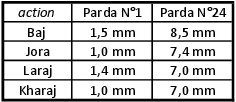
Now even chords can be played perfectly on this instrument… making it the extreme sitar for guitarists, or,… reverse ?? Or just: the ultimate hybrid sitar… 🙂
For more details, please read (on this site): The modification of an acoustic travel sitar into an electric hybrid guitar-sitar.
Hybrid Sitar, a real Guitar Sitar
The modification of an acoustic travel sitar into an electric hybrid guitar-sitar.
Specifications Materials Drawings The modification process
This instrument has been made on demand
The original idea comes from Frédéric t’Serstevens (March 2016)
Design & drawings by Klaas Janssens @ Sitar Factory (April 2016)
Completion by Klaas Janssens @ Sitar Factory (June 2016)
Specifications
Dimensions: 1060mm x 300mm x 130mm (L x W x H)
Neck width: 89mm
Scale: 831mm
Strings action:  String configuration: custom sitar (Baj, Jora, Laraj & Kharaj), tuned as guitar
String configuration: custom sitar (Baj, Jora, Laraj & Kharaj), tuned as guitar
Pardas: 24 custom hybrid shaped
Taravs: 11 traditional with wooden kuntis
No cikaris installed
Materials
Body: teak wood
Parts: white fiber & metal
Pardas: Nickel Silver wire 5,0mm diameter
Machine heads: M6 Mini / Schaller
Pickup: Neck & Bridge single coil Telecaster™ guitar pickup / Seymour Duncan
Strings: Silver plated steel N°3 (0,30mm) & N°0 (0,23mm) / Pyramid
Nickel flatwound Jora N°26 (0,46mm) / Pyramid
Nickel flatwound Laraj N°24 (0,56mm) / Pyramid
Nickel flatwound Kharaj N°22 (0,76mm) / Pyramid
Drawings
1 Parda lane raised
2 Parda custom shaped
The modification process
1 The original body, removing the original pardas
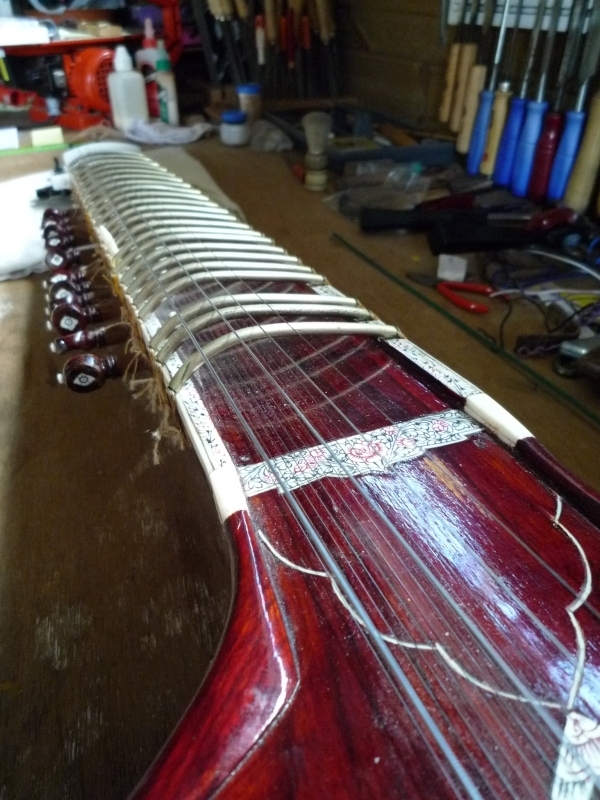
2 Fitting a raised parda lane, made out of maple & celluloïd
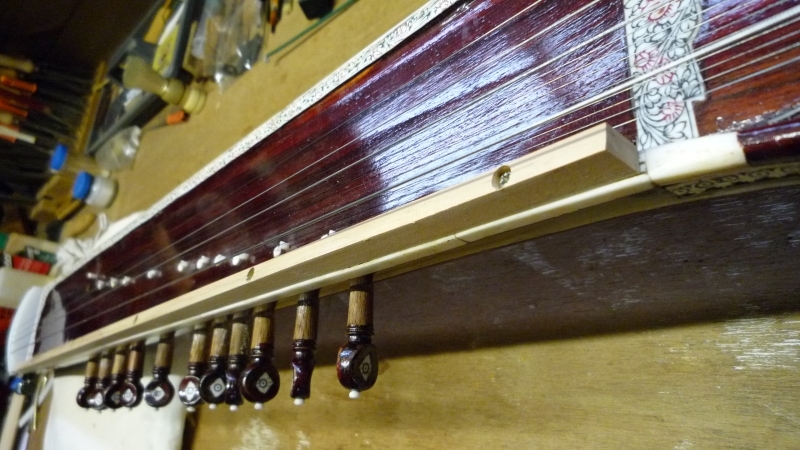
3 Creating a new shaped parda: the hybrid parda
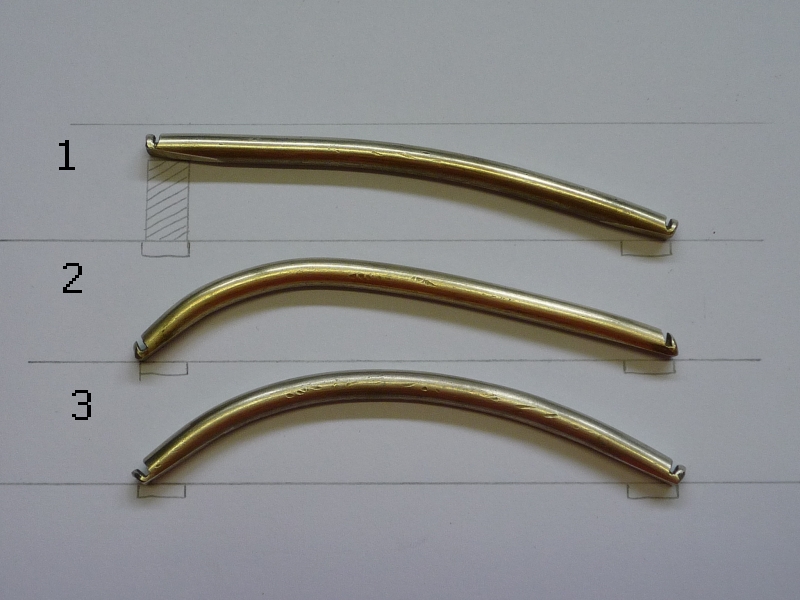 1 = Hybrid parda 2 = Rikhi Ram parda 3 = Traditional parda
1 = Hybrid parda 2 = Rikhi Ram parda 3 = Traditional parda
4 Mounting a full set (24 pcs) of hybrid pardas
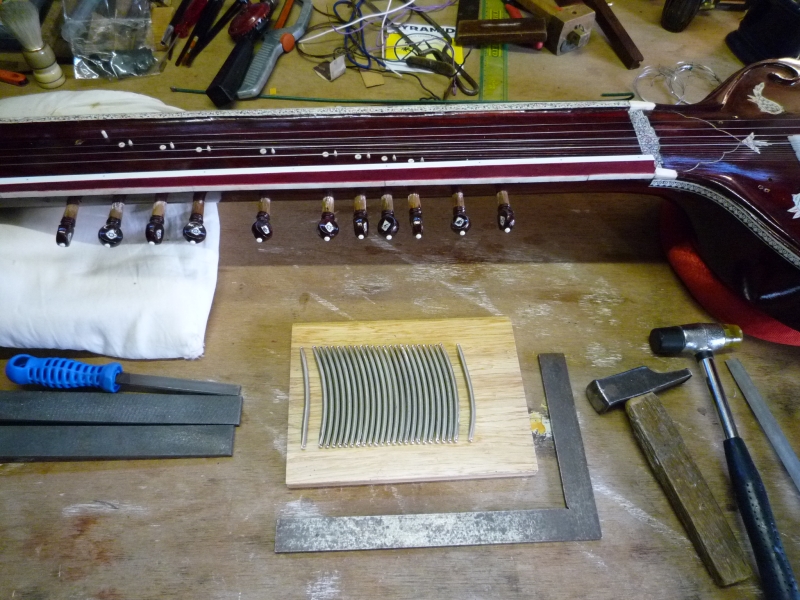
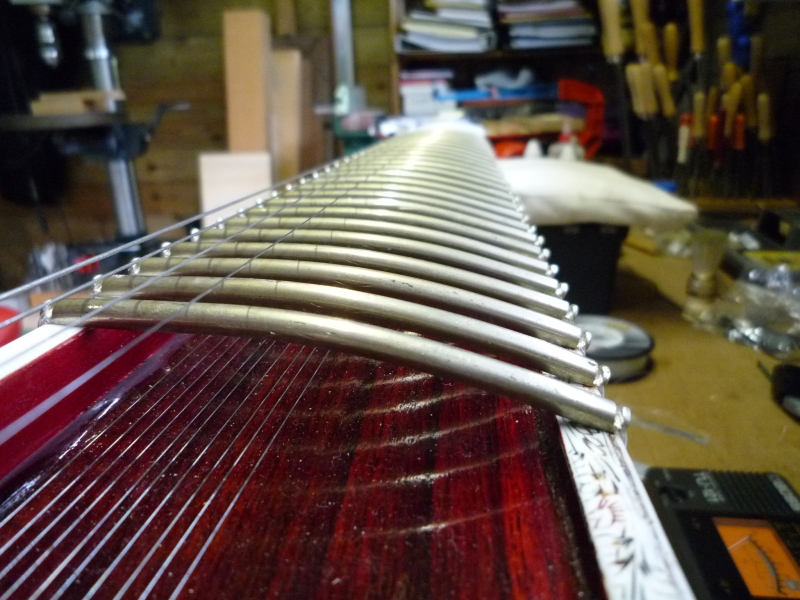
5 Fitting compact electronics control & pickups
Engravings on Elforyn
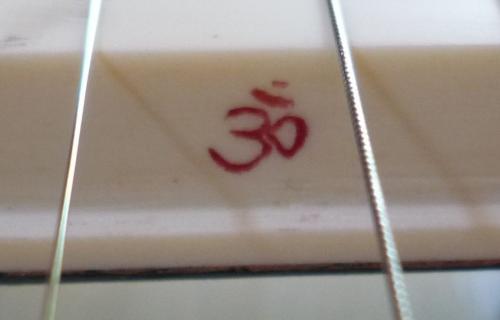 Elforyn™ is a modern synthetic ivory substitute and can easily be engraved. The technique is identical to traditional decorative engravings on real ivory, bone, celluloid and plastics. You only need a “pencil” with a hard and sharp end, coloured wax and a scraper. The pencil can be made out of an old and worn triangular file. Shape and sharpen the tip thoroughly with a fine grade grinding stone. Check the sharpness and try to write your name on piece of wasted plastic first. Make sure to engrave the lines equally deep and wide.
Elforyn™ is a modern synthetic ivory substitute and can easily be engraved. The technique is identical to traditional decorative engravings on real ivory, bone, celluloid and plastics. You only need a “pencil” with a hard and sharp end, coloured wax and a scraper. The pencil can be made out of an old and worn triangular file. Shape and sharpen the tip thoroughly with a fine grade grinding stone. Check the sharpness and try to write your name on piece of wasted plastic first. Make sure to engrave the lines equally deep and wide.
Wax is used as a filler. Prepare it by melting it slowly. Be careful not to overheat. Also, …damps can be dangerous! Add some nice colour pigments to the melted wax and stir. Use a scraper to apply the wax on the engravings. Let it cool down and scrape the excess off.
A scraper can be made out of an old and worn blade of a hacksaw. Make the edges surface nicely straight and perfectly even. Don’t be afraid to polish it up. Then learn to scrape by holding it almost perpendicular to the surface.
More info on Elforyn™ here: www.elforyn.info
The See-Tar
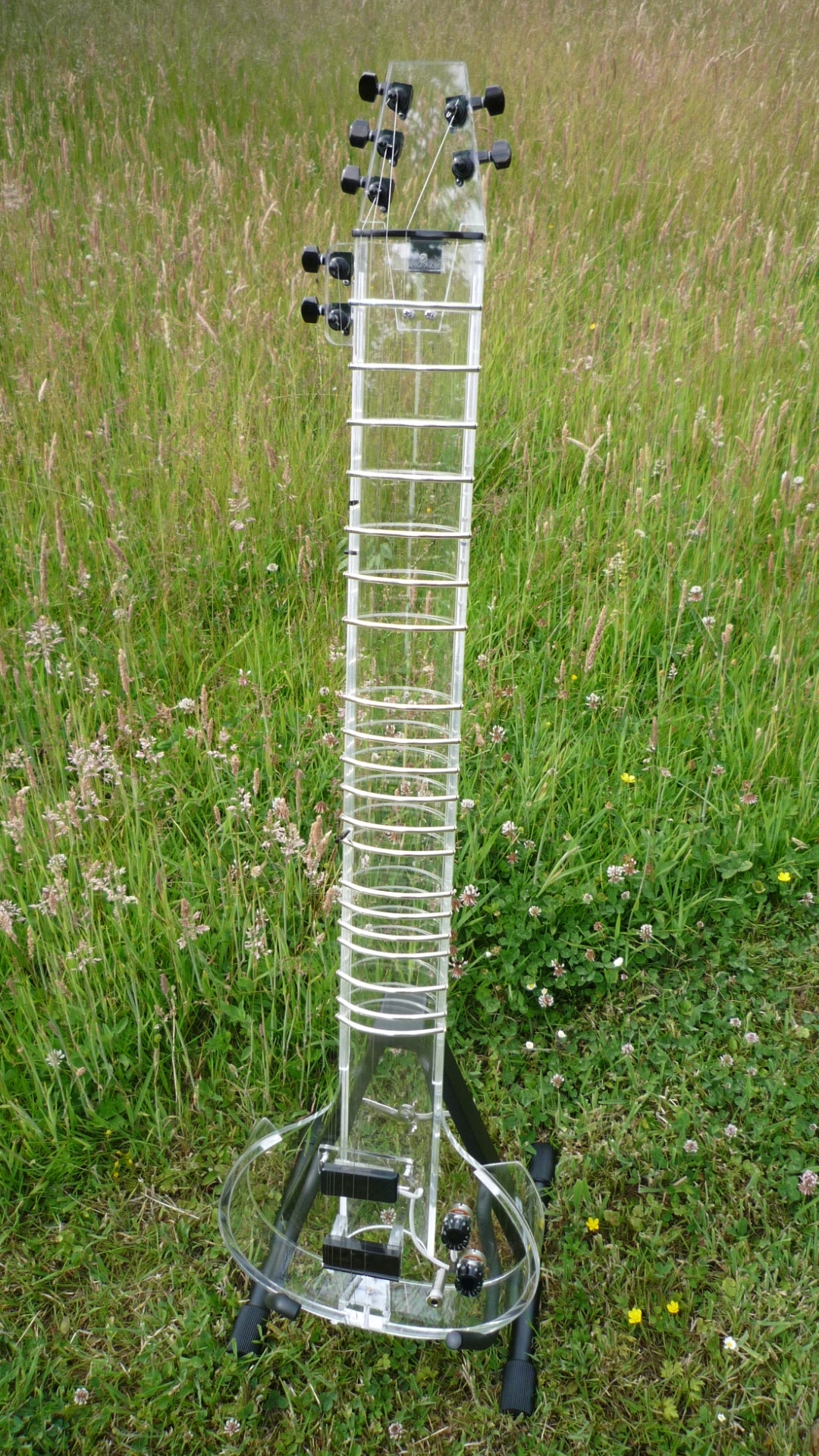 Last week Friday, 19/06/2015, I’ve delivered this electric plexiglass sitar to Purbayan Chatterjee. One year has passed since he had asked me to build this instrument for him (May 2014). Initially I found it a weird idea and honestly, I didn’t favour the choice of plexiglass because of the rather unknown and synthetic nature of this material (modified PMMA / Polymethyl methacrylate). In general I prefer working on wood, rather than with plastics. But the unique challenge seduced me completely and I plunged into this venture which took me a year to accomplish.
Last week Friday, 19/06/2015, I’ve delivered this electric plexiglass sitar to Purbayan Chatterjee. One year has passed since he had asked me to build this instrument for him (May 2014). Initially I found it a weird idea and honestly, I didn’t favour the choice of plexiglass because of the rather unknown and synthetic nature of this material (modified PMMA / Polymethyl methacrylate). In general I prefer working on wood, rather than with plastics. But the unique challenge seduced me completely and I plunged into this venture which took me a year to accomplish.
The moment I finally passed this sitar into Purbayan’s hands was very exciting, for me as well as for him, because this is really the first sitar ever made completely out of plexiglass. The instrument has a breathtaking look. The transparency is 100% and makes it look quite unreal… But, as this is meant to be a professional musical instrument, I was especially wondering how it will behave on stage, how it will sound, will the material withstand the constant changing and heavy tensions caused by the powerful play of an extremely talented professional sitarist like Purbayan Chatterjee…? 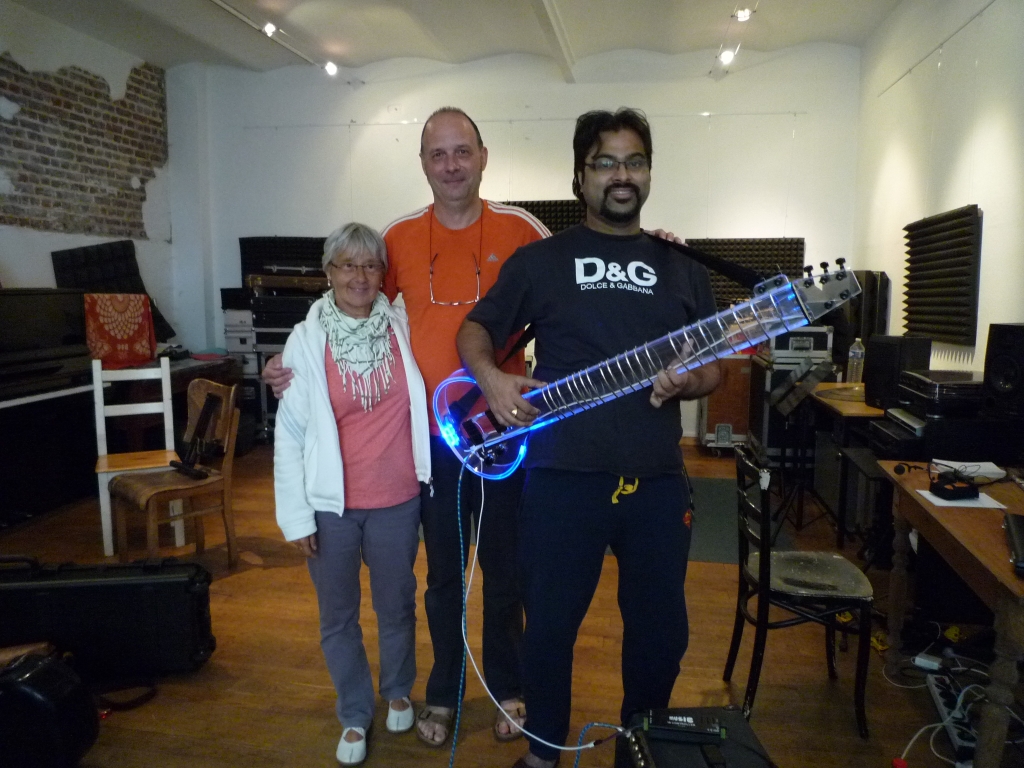
Soon after handing over the instrument I went back home and kept my mobile close to me. That same afternoon Purbayan tested the sitar profoundly during the rehearsal for a concert the next day in Brussels with Slang, the impressive jazz/rock band (with flute virtuoso Manuel Hermia) from Belgium. 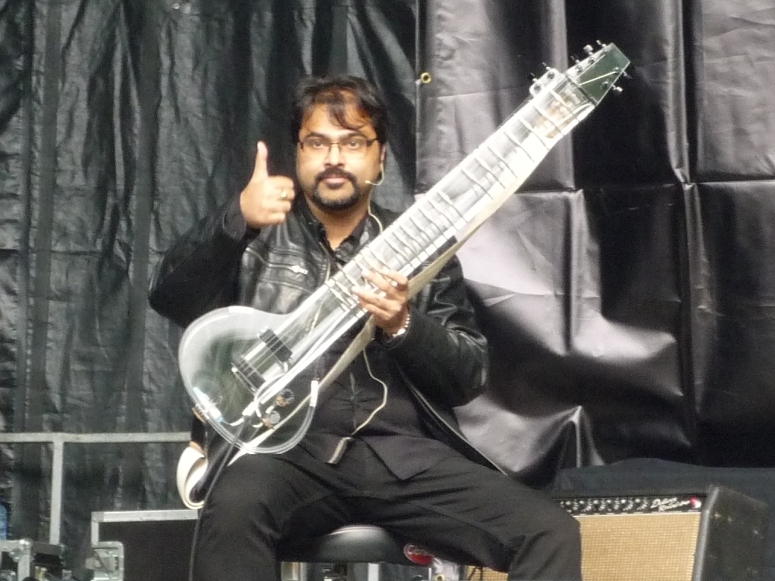
To my relief no alarm call came, not in the evening, and not in the following morning. A few hours before the concert on Saturday I received an sms from Manuel Hermia writing: “Purbayan loves your sitar!!” and, indeed, a few moments later, when we met in front of the concert stage, his big smile welcomed me,… and,… the concert was marvellous and blew away all my initial questions. Purbayan named the instrument “The See-Tar”, a see-through sitar.
Must read (on this site): The making of a solid body electric sitar in plexiglass.

